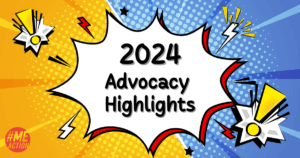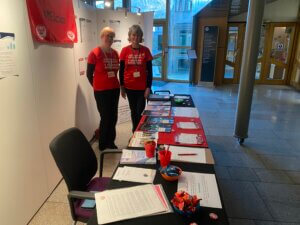Dr. Mark VanNess and Staci Stevens recently visited the National Institutes of Health (NIH) to present their findings on cardiopulmonary exercise testing (CPET) and the importance of the symptom of post-exertional malaise to the NIH ME/CFS Special Interest Group.
Out of this conversation, Dr. Brian Walitt, lead investigator of the ME/CFS Intramural Study, extended an invitation to Workwell Foundation to help recruit patients for to create focus groups on post-exertional malaise. This information will be used to help researchers craft surveys that measure the condition in individual patients qualitatively, and to compare these survey results with objective measurements. The NIH has to know the right questions to ask patients in order to gather the right kind of information.
It is vital that we ensure that the NIH can describe PEM in a way even new patients will recognize. The survey that is created to characterize PEM now may be in use last long past the execution of this study, so it is vital that we communicate clearly and effectively. Please participate today!
Unfortunately, the NIH is recruiting US citizens only for these focus groups. However, if you are not a US citizen and would like to describe your experience of PEM, or an aspect that you feel is often left out of PEM descriptions online or in research, a US representative who is part of a focus group will be happy to carry your concerns forward. Note that the NIH is asking for qualitative descriptions of your experience rather than helpful research on quantitative measurements associated with PEM, like cytokine measurements or alterations in microbiota.
If you are willing to share your experience with post-exertional malaise, please contact Ms. Barbara Stussman at: [email protected] or call (301) 496-1788. More information is available in the Focus Group Recruitment letter.






6 thoughts on “Tell the NIH about your experience of PEM”
Walitt?
Indeed.
So is this a pre-designed test or a narrative of sorts?. Didn’t quite catch that detail but signed up nonetheless.
It’s a focus group, where they try to gather together a descriptive narrative of PEM — so far as I am aware, Marcie.
The effects of PEM show up in changes in heart rate patterns.
Hopefully the NIH will obtain an in depth understanding of PEM.
Should be called Post External debilitating painful exhausted. PEM doesn’t cover what the body is going through.
Comments are closed.